Patchwork is a sewing technique that creates things from different pieces and materials. For beginners, it may seem complicated, but step-by-step instructions, photos and diagrams will make learning much easier.
General cutting rules
The key to any beautiful thing is its neatness and geometric precision. Just like when assembling a mosaic, patchwork requires perfectly calculated and cut pieces that will not be incompatible when combined.
To do this, you need to follow some cutting rules:
- To avoid deformation, change in size and color, after washing the finished item, the newly purchased fabric should be washed and then steamed with an iron.
- Before working with previously used pieces of fabric, they should be soaked in a solution of water and starch (it is better to do this using a spray bottle), and then ironed.
- To draw the fabric into patches of the desired shape, use soap or special chalk, or at least a pencil with a soft lead. But under no circumstances should you draw on the fabric with a pen: the ink, absorbed into the fabric, remains there forever.
- Fabrics should be cut in the direction of the grain, otherwise the parts may become deformed when sewn together. When working with new fabric, you need to focus on the edge.
To cut the fabric into elements, you first need to make 2 templates of the desired shape from thick paper or cardboard: one with indents, the second without them. Each of the templates is applied to the material in turn and traced using the above tools.
What fabric is best for work?
Any fabric that is close to the soul of a beginning seamstress can be suitable for patchwork sewing. However, each fabric has its own features and characteristics that can subsequently affect the convenience of work, and, consequently, the quality of the finished product.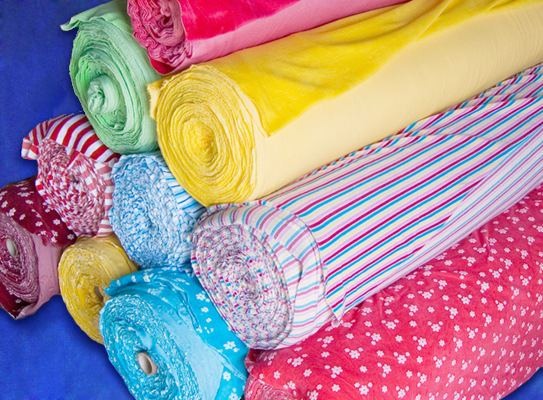
Cotton fabric is considered the most popular, as its characteristics allow even novice needlewomen to work with it:
- Optimal density and weight;
- does not shrink when washed;
- does not crumble or spread when cut;
- does not change color;
- easy to sew;
- immediately takes the desired shape, which it retains for a long time.
Due to its quality, linen also occupies the top positions in the choice of material:
- Durability, wear resistance;
- hypoallergenic;
- high thermal conductivity and air permeability;
- It practically does not become electrified, even under strong friction.
Silk patchwork items look beautiful and expensive, but it is difficult for beginners.
It is very difficult to work with the material: it is very electrified, any mistake made when sewing or cutting will immediately catch the eye. In addition, it is not suitable for making things for the home (blankets, pillow covers, etc.), as it wears out very quickly and becomes unusable, losing all its gloss and beauty.
Warm, homey looks are trending today, which is why wool products have become more popular. In addition to the aesthetic function, this material also has a practical one. It is easier to work with than with silk, but you will have to get your hand in a little bit first, as problems often arise when sewing.
Among the advantages of this material we can highlight:
- Maintains a neat appearance, as it does not wrinkle;
- resistant to various types of contamination;
- absorbs excess moisture in the house, which does not affect the appearance of the material;
- elastic;
- can serve for many years.
One of the advantages of patchwork sewing is that you don’t have to choose just one type of fabric; you can combine them to create original items.
Patchwork technique and its varieties
This sewing technique has a long, rich history, during which patchwork sewing acquired new forms and varieties, thanks to which every beginner can choose their favorite sewing patterns using step-by-step instructions and photos.
Traditional version of patchwork technique
Traditional patchwork items are made using pieces of fabric that have the shape of simple geometric figures, with regular silhouettes. In this version, you can make items of both small size (pillowcase, potholder) and large size (plaid, rug).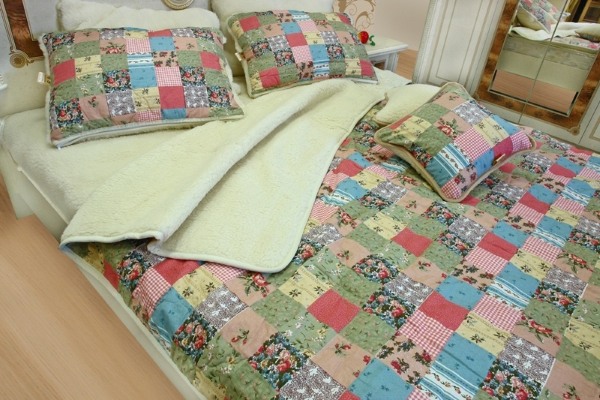
A distinctive feature of classic patchwork is that the front side is made up of scraps., while the lining may be made of a single piece of material.
Japanese patchwork
This version of patchwork sewing combines the traditions of the East and West. For the most part, this technique is used to make large-sized items. Preference is given to silk fabrics, mostly expensive and high-quality ones. But for hand stuffing, beginners can practice on a cheaper variety of silk.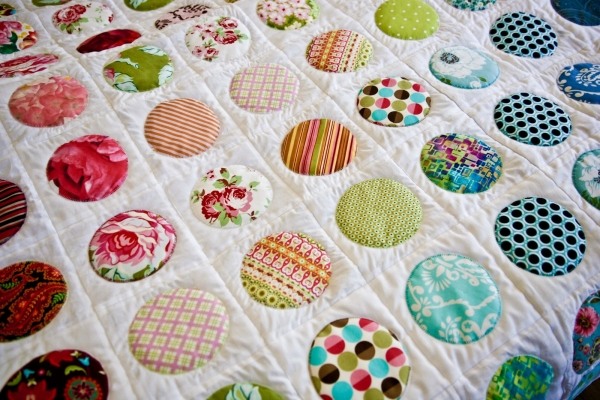
The basis of the elements, as in the traditional version, are geometric figures:
- squares,
- rectangles,
- rhombuses.
Knitted patchwork
This type of patchwork is in many ways similar to the traditional one, but here the elements are not sewn together, but connected with a hook. 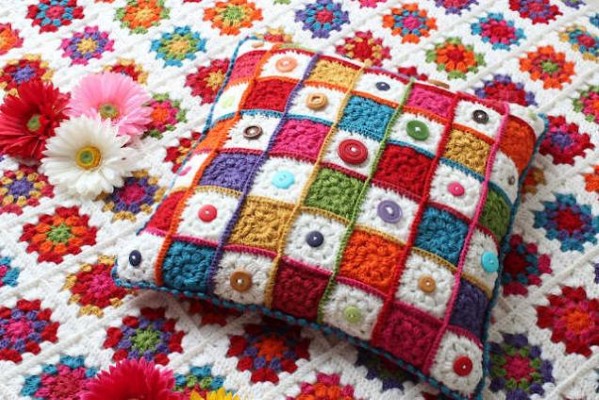 Moreover, different materials can be used. In this type of patchwork sewing, the most common items are women's bags and bedspreads.
Moreover, different materials can be used. In this type of patchwork sewing, the most common items are women's bags and bedspreads.
Crazy patchwork
Unlike other types of patchwork, here the elements do not have clear geometrically correct shapes, rather the opposite – hence the name. 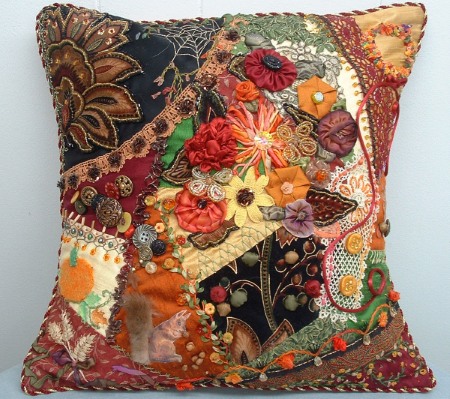 The threads in the stitching areas are masked by various means: lace, ribbons, embroidery, etc. In addition, the use of beads, buttons, and various pendants is common.
The threads in the stitching areas are masked by various means: lace, ribbons, embroidery, etc. In addition, the use of beads, buttons, and various pendants is common.
Quilt
In this technique, using a machine stitch that reproduces various patterns, 2 pieces of fabric are sewn together, with a soft lining, such as synthetic padding, placed between them. This type of patchwork attracts craftswomen with its greater elegance.
Technique "Watercolor"
The basis of the product in this technique are squares, the colors of which are combined from light to dark. The correct selection of the color scheme and the placement of the patches create the effect of painting with watercolors. 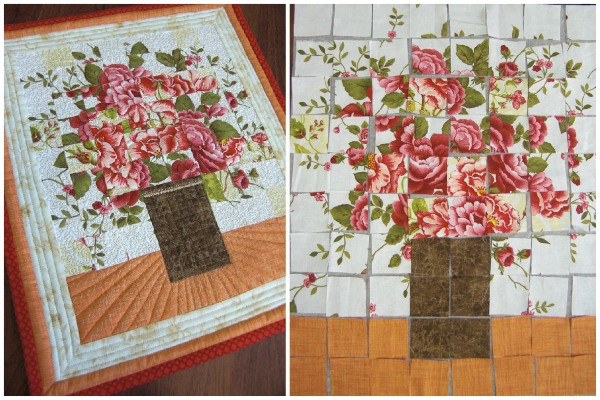 For beginners, it is best to choose fabrics with medium-sized prints to get a beautiful pattern.
For beginners, it is best to choose fabrics with medium-sized prints to get a beautiful pattern.
The Well Technique
This technique is also based on a square, however, unlike the "Aquarium", where the fabric consists of square patches, here the fabric itself has a square shape, thanks to the strips sewn together, which form a geometric figure. You can connect the strips into a square in two ways, which differ in the assembly patterns.
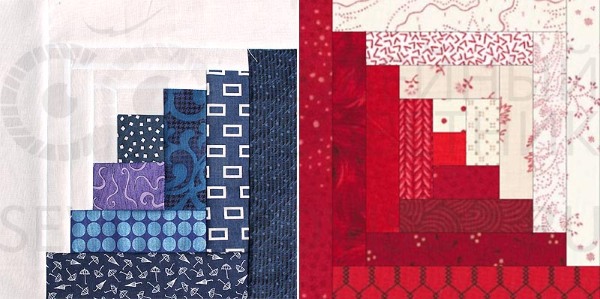
This technique is quite simple for beginners, as it has a simple stitching pattern.
And with step-by-step instructions and photos, patchwork sewing in this technique should not cause any difficulties.
Jacob's Ladder Technique
This technique is made from two geometric figures: a triangle and a square. So, to create a canvas in this technique, you need 9 square-shaped patches. 5 of them should consist of squares of 2 different colors (i.e. one square consists of 4 square parts), 4 - of 2 triangles, also of different colors.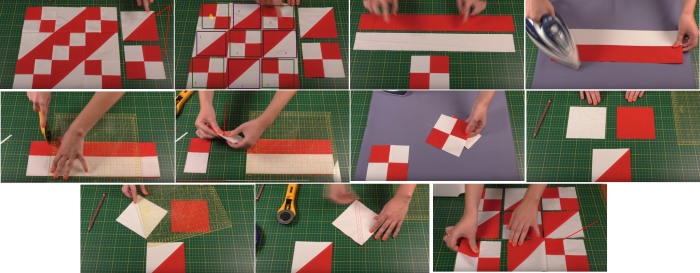
All elements must be combined as follows: one piece of squares is placed in the center, elements with triangles are sewn to each of the 4 sides of the central element, the remaining elements with squares should be placed in empty spaces (ultimately, the pieces sewn together should form a square).
Bargello technique
To make things in this technique, first of all, you need to cut fabrics of different colors into strips of the same length and width, which are then sewn together, forming a single piece of fabric. Next, the fabric needs to be sewn into a "tube", which is then cut across the seams so that all the strips have the same length and width and consist of different color elements.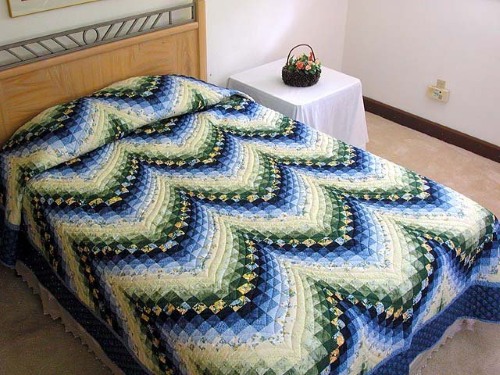
The final step is to sew the patches together into a canvas, forming a pattern by "separating the ring" in a certain area, and each time differently. At first glance, patchwork sewing in this technique may seem too complicated and confusing for beginners, but step-by-step photos and diagrams will dispel these fears.
Pizza Technique
The name of the technique speaks for itself, because it is almost exactly like preparing a national Italian dish.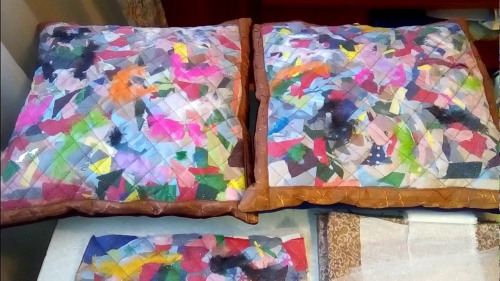
On the laid base fabric, you need to "scatter" (chaotically, but remembering about color compatibility) multi-colored fabric elements (as a rule, they are small in size), which then need to be covered with transparent fabric. At the end, the "pizza" needs to be stitched so that it does not fall apart.
Boro Technique
This technique consists of the following: a base fabric is taken and various pieces of material are sewn onto it, similar to patches on old clothes.  Basically, the fabrics should match in type of material, but you can also use your imagination. The most popular fabric for this technique is denim.
Basically, the fabrics should match in type of material, but you can also use your imagination. The most popular fabric for this technique is denim.
“Lyapochikha” technique
This is a fairly simple technique in which patches of the same length are sewn in rows. Each of the elements is sewn along the middle, folding the edges to create the necessary volume. 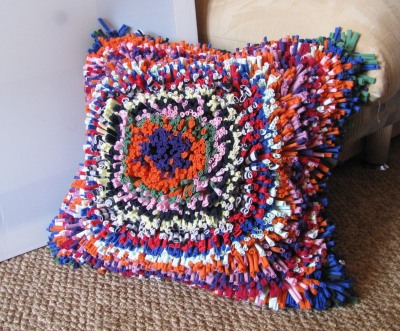 In order for the product to hold its shape, the patches are sewn very tightly. The splendor of the product depends on the length of the elements. The most popular thing made using this technique is a rug.
In order for the product to hold its shape, the patches are sewn very tightly. The splendor of the product depends on the length of the elements. The most popular thing made using this technique is a rug.
Technique "Magic Triangles"
The essence of this technique is evident from the name itself: the canvases are sewn from elements made in the form of triangles. Due to the versatility of this figure, the canvases can be folded into various patterns: from simple squares (when sewing the long side) to various colors.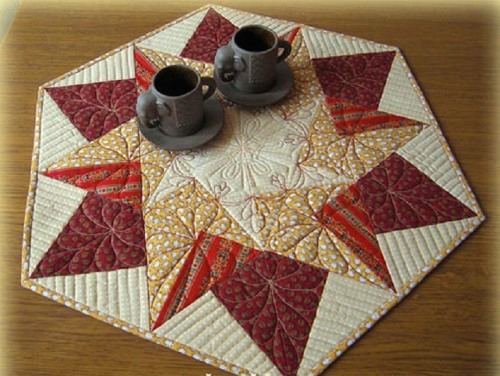
For beginners, it is recommended to work with isosceles triangles., in this format it is difficult to allow errors when stitching elements.
Honeycomb Technique
In this technique, items are created from hexagons, which are shaped like a honeycomb. 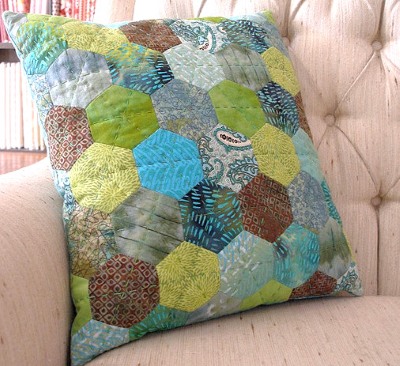 By sewing these elements together using various combinations, you can create very original and beautiful things.
By sewing these elements together using various combinations, you can create very original and beautiful things.
Patchwork sewing step by step for beginners
Not many people know how to make things using patchwork. For beginners, the technique, step-by-step photos, and diagrams offered in this article will become indispensable assistants in a new business.
Blanket
Before starting work, you should decide on a pattern, choose a fabric (the best solution is one material of different colors, as well as a single-color fabric for the back) and filler (usually synthetic padding is used), make templates from cardboard or any other dense material (here we are considering making a blanket from squares).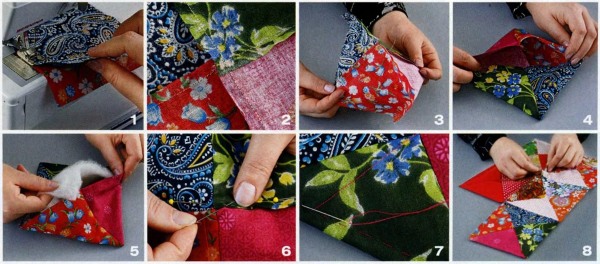
Step by step instructions:
- First of all, using templates, you need to cut out the required number of square elements. Their number and size depend on the personal desires and preferences of the needlewoman.
- Then, applying the patches to each other, you need to sew them together along the marking line from the back side. Having combined all the elements together, thus creating the front side of the blanket, they should be carefully ironed.
- The plain fabric for the backing should be laid out on a flat surface, and the filling should be laid on top. The padding polyester should be cut out with a margin on each side. To prevent the filling from rolling up in the corners, it should be quilted (from the center to the edges).
- The final step is to sew all three layers together. If the layers slide when sewing, they can be pinned or needled. To prevent the blanket from fraying at the edges over time, they can be sewn with tape.
Rug
To make a rug, you can use small scraps of an unlimited number of colors. However, you must purchase a single-color fabric (2.5 times larger than the size of the planned rug), transparent fabric and filler. The single-color fabric should be laid out on a flat surface, and the filler should be placed on top so that it takes up only half of the fabric.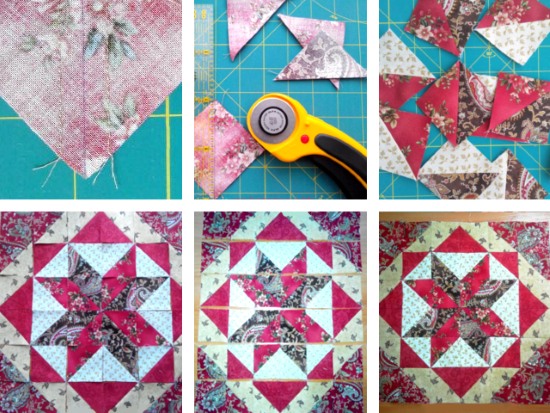
The second half should be placed on top of the filling, sewn and stitched. Next, on the resulting "pillow" you need to randomly (but artistically) distribute the scraps of different shapes, colors and sizes, which are then covered with a transparent piece of fabric. Now the rug needs to be stitched over the entire area so that it does not fall apart.
Potholder
To make a potholder, it is best to use denim, as it is quite dense and takes a long time to heat up. It can be done using any of the above techniques, but the most popular is the "Well" technique. To do this, you need to cut 10 strips of different lengths from denim fabric of different colors. Then all the elements need to be combined according to the appropriate pattern.
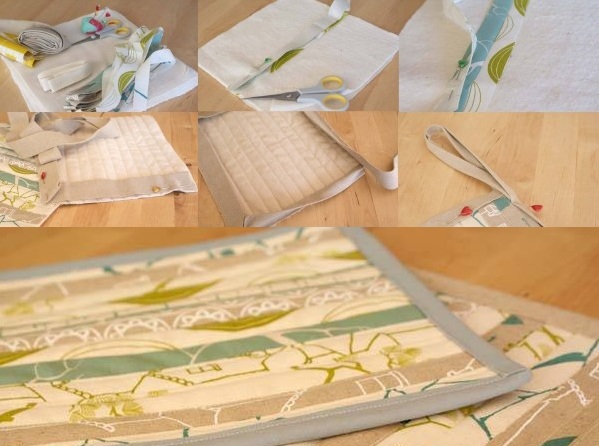
The final touch is the edging of the potholder: any ribbon can be sewn along the edges, which should be turned into a loop at the edge. This version of the technique is intended for beginners, but having gained the skill and studied many step-by-step photos, instructions and diagrams, each needlewoman will be able to perform more complex work using patchwork sewing.
Patchwork sewing entered the life of the Russian people a long time ago, but in recent years it has not only not lost its gloss, but is also gaining more and more popularity. Moreover, today this method of sewing is used not only by needlewomen for home design, but also by fashionable couturiers for branded clothing.
Video tutorials on patchwork sewing
How to do patchwork sewing using the "Well" technique, watch the video:
How to sew a patchwork blanket, watch the video:

Thank you) everything is very good and beautifully designed)))
Very interesting information, educational videos, thank you.
Everything is very beautiful and neat.
Thank you very much for the article!!
Wonderful article. Thank you!!! I will try to do such handicrafts. I liked it very much.